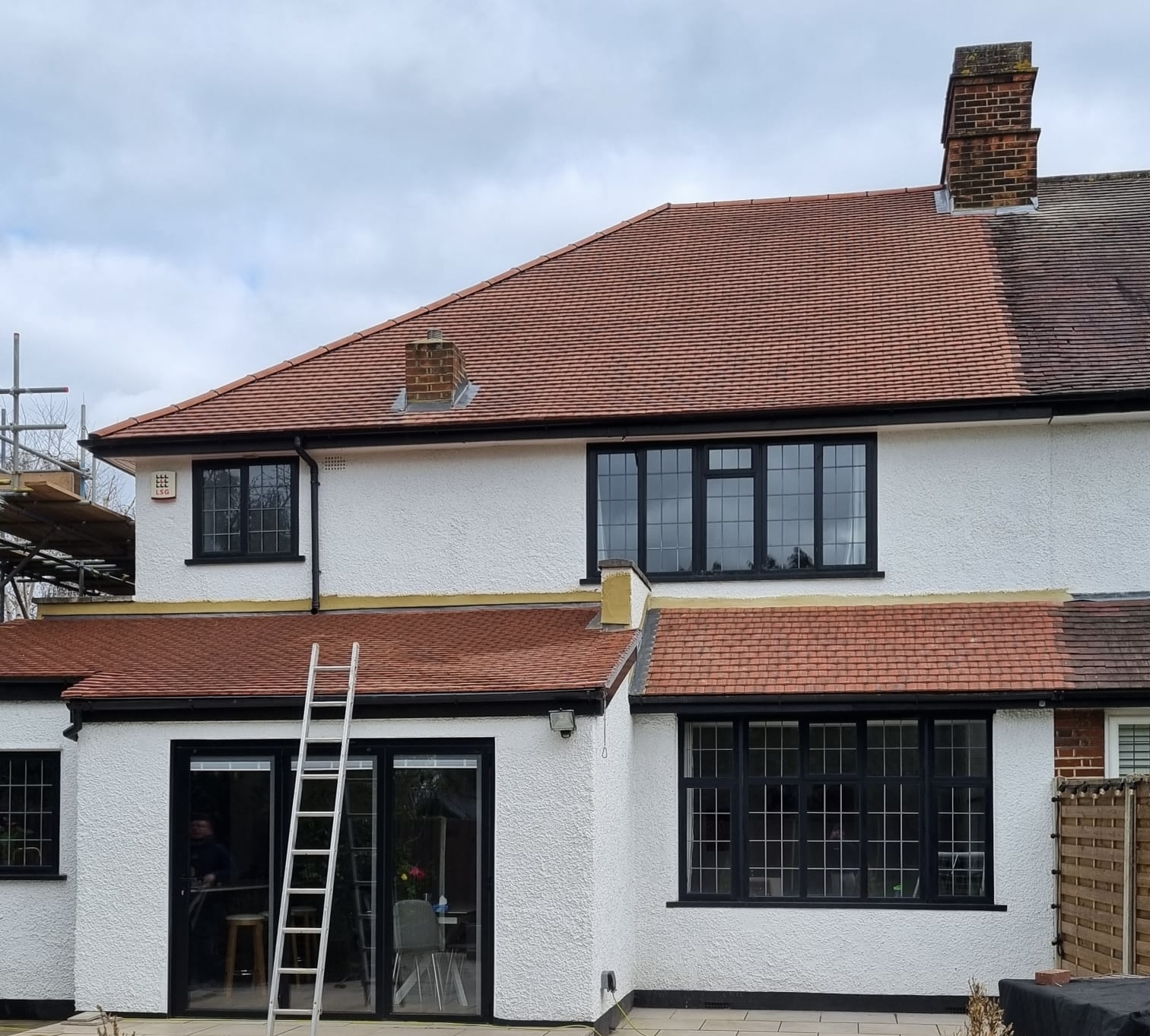+44 7853 968135
How expensive are soffits and fascias?
Homeowners across the UK often find themselves surprised by the significant investment required for soffit and fascia replacement, with costs varying dramatically based on property size, material choices, and regional labour rates. Understanding these expenses upfront helps you budget effectively and avoid the shock of unexpected quotes that can range from hundreds to several thousands of pounds.
The complexity of modern building regulations and the critical role these components play in protecting your roof structure means that proper installation represents a substantial but necessary investment in your property’s long-term integrity. Professional installation ensures compliance with UK building standards whilst providing the weather protection your home requires.
How Much Should Fascia and Soffits Cost?
Professional fascia and soffit installation typically costs between £100-£300 per linear metre in the UK, though this figure fluctuates significantly based on your chosen materials and local contractor rates. UPVC installations generally sit at the lower end of this spectrum, whilst premium materials like cedar or composite boarding command higher prices due to their enhanced durability and aesthetic appeal.
Regional variations play a considerable role in determining final costs, with London and South East properties often experiencing prices 20-30% above the national average. Northern regions typically offer more competitive rates, though finding qualified tradespeople may require longer lead times, particularly during peak renovation seasons.
Need some Support with your Fascia and Soffits? Speak with a member of our Professional Fascia and Soffits Team here

How Much Does It Cost to Replace Fascia and Soffits?
Complete replacement projects for an average three-bedroom semi-detached property range from £1,500-£4,500, depending on the extent of work required and material specifications. This comprehensive approach often proves more cost-effective than piecemeal repairs, as scaffolding and labour costs remain relatively fixed regardless of project scope.
Emergency replacements following storm damage or structural failure typically incur premium pricing due to urgent timescales and potential complications from water damage. Planning your replacement during optimal weather conditions and booking well in advance can reduce costs by 15-25% compared to emergency call-outs.
| Property Type | UPVC Cost Range | Timber Cost Range | Premium Materials |
|---|---|---|---|
| Terraced House | £1,200-£2,500 | £1,800-£3,500 | £2,500-£4,500 |
| Semi-Detached | £1,500-£3,000 | £2,200-£4,200 | £3,000-£5,500 |
| Detached House | £2,000-£4,500 | £3,000-£6,000 | £4,000-£8,000 |
| Bungalow | £1,800-£3,500 | £2,500-£4,800 | £3,200-£6,200 |
What Is the Life Expectancy of a Fascia and Soffit?
Quality UPVC fascias and soffits typically last 20-30 years with minimal maintenance, making them an attractive long-term investment despite higher initial costs compared to basic timber alternatives. Timber installations, when properly treated and maintained, can achieve similar lifespans but require regular inspection and treatment every 3-5 years to prevent rot and insect damage.
Environmental factors significantly impact longevity, with coastal properties experiencing accelerated wear due to salt exposure, whilst properties in sheltered locations may exceed expected lifespans. The UK Government’s guidance on building maintenance emphasises the importance of regular inspections to maximise component lifespan and prevent costly emergency repairs.
Why Is Soffit So Expensive?
Soffit installation costs reflect the specialised skills required for proper ventilation integration and the precision needed to ensure weatherproof sealing around complex roof geometries. Modern building regulations mandate specific ventilation requirements, necessitating careful calculation and installation of ventilated soffit sections to prevent condensation and maintain roof void airflow.
Material costs have increased substantially due to improved manufacturing standards and enhanced weather resistance properties built into contemporary products. Premium soffits incorporate advanced UV protection, impact resistance, and thermal expansion accommodation, justifying higher prices through extended service life and reduced maintenance requirements.
| Cost Factor | Impact on Price | Typical Increase |
|---|---|---|
| Scaffolding Access | High | £400-£800 |
| Complex Roof Design | Medium | £200-£600 |
| Premium Materials | High | £500-£1,500 |
| Ventilation Requirements | Medium | £150-£400 |
| Structural Repairs | High | £300-£1,200 |
| Regional Labour Rates | Variable | 15-30% |
The Building Regulations Approved Document F specifies minimum ventilation standards that directly impact soffit design and installation complexity, contributing to overall project costs.
Understanding the True Value of Quality Soffit and Fascia Investment
Investing in quality soffits and fascias represents far more than a cosmetic upgrade, serving as your home’s primary defence against weather penetration and structural damage that could cost thousands to rectify. Professional installation with premium materials typically pays for itself through reduced maintenance costs and enhanced property value, whilst protecting your roof structure from the costly consequences of water ingress.
The decision between budget and premium options should consider your property’s age, local climate conditions, and long-term ownership plans, as higher initial investment often delivers superior value over the component’s operational lifetime. Modern materials offer unprecedented durability and weather resistance, making them particularly suitable for the UK’s challenging climate conditions.
Key considerations for maximising your investment include:
Need Help with Fascia and Soffit Matters? Talk to one of our Fascia and Soffits Experts today!
How Expensive Are Soffits and Fascias: Frequently Asked Questions
Professional installation typically costs £100-£300 per linear metre, with UPVC at the lower end and premium materials commanding higher prices. Regional variations and property access complexity can significantly impact these base rates.
Property size, material choice, roof complexity, access requirements, and regional labour rates are the primary cost determinants. Structural repairs and building regulation compliance can substantially increase project expenses.
Quality UPVC installations last 20-30 years with minimal maintenance, whilst properly maintained timber can achieve similar lifespans. Premium materials often exceed these expectations when correctly installed and maintained.
Emergency work commands premium pricing due to urgent timescales, potential weather complications, and the need for immediate scaffolding access. Planning replacements in advance can reduce costs by 15-25%.
UK Building Regulations require specific ventilation standards and weather protection compliance, detailed in Approved Document F. Professional installation ensures regulatory compliance and proper integration.
Premium materials offer enhanced durability, weather resistance, and reduced maintenance requirements that often justify higher initial costs. The decision should consider property age, local climate, and long-term ownership plans.
Scheduling work during optimal conditions, obtaining multiple quotes, and avoiding emergency replacements help minimise costs. Combining work with other roofing projects can also reduce scaffolding expenses.
UPVC installations need minimal maintenance beyond occasional cleaning, whilst timber requires regular inspection and treatment every 3-5 years. Proper maintenance significantly extends component lifespan and prevents costly repairs.
London and South East properties typically experience prices 20-30% above national averages, whilst northern regions offer more competitive rates. Local labour availability and material transport costs influence regional pricing.
Visible rot, pest damage, loose sections, water stains, or failing paint indicate replacement necessity. Early intervention prevents structural damage and reduces overall replacement costs.
Well-maintained soffits and fascias enhance kerb appeal and demonstrate property care to potential buyers. According to Soffits and fascias, these components are essential architectural elements that protect roof structures whilst contributing to exterior aesthetics.
Average installations on standard properties take 2-5 days, depending on property size and complexity. Weather conditions and structural complications can extend timescales significantly.
Reputable installers offer 10-20 year warranties on materials and workmanship, with premium products often including extended manufacturer guarantees. Comprehensive warranty coverage protects against installation defects and material failures.
DIY installation is technically possible but requires significant skill, proper equipment, and building regulation knowledge. Professional installation ensures compliance, safety, and optimal performance whilst providing warranty protection.

